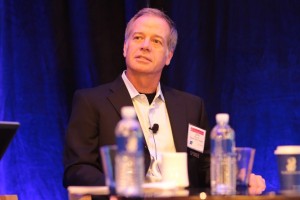
- State has room for $2.4 bln of new commitments
- May not commit full amount due to tight terms, high valuations
- Last year’s TPG commitment counts against 2015 allocation
Although Oregon consultant TorreyCove Capital Partners’ investment plan outlines a $3.1 billion investment pace this year, “our base case for 2015 is $2.4 (billion),” Oregon CIO John Skjervem said in an email.
The lower amount takes into account Oregon’s $700 million commitment last year to a TPG bridge fund. (TPG raised the fund prior to the launch of its seventh flagship vehicle, currently being marketed with a $10 billion target.)
Oregon has billions to put to work at a time when several mega-funds are expected to come back to market. Oregon invested in several of the biggest funds to close in the last decade, including vehicles managed by Apollo Global Management, Kohlberg Kravis Roberts and TPG, among others. Those managers will likely seek out Oregon again when they raise their next funds.
Even with several large mega-funds on the horizon, however, Skjervem believes that Oregon could commit less than the $2.4 billion that its pacing model calls for in 2015.
“If anything, we may do less as valuations are high and terms and conditions tight,” he said. “$2.4 (billion) is our base case projection, but the most likely ‘miss’ would be less not more.”
Tight terms? Walk away
In his email, Skjervem also disclosed the funds with which Oregon staff elected “not to consummate previously-approved commitments” in 2014, confirming that allocations to Littlejohn Fund V and Sofinnova Venture Partners IX were not finalized.
In previous interviews, Skjervem said disagreements on partnership terms led staff to opt out of two approved commitments to private funds, though he declined to state the names of the funds. Both funds were oversubscribed, and Skjervem attributed the disagreements to the GPs’ unwillingness to offer fee discounts that were available on earlier funds.
“These were not adversarial issues; we came close. We just shook hands and said maybe next time,” Skjervem told Buyouts last October. “We want to adhere to the underwriting principles that have been endorsed by our council, and in certain cases we weren’t able to maintain those principles throughout the negotiating process.”
The TorreyCove presentation reported that three of the commitments investment council authorized in 2014 failed to mature. In May, the state’s investment council did not move forward with a commitment to Warburg Pincus Energy when it found that the fund would not offer a preferred return.
Oregon, one of the private equity industry’s earliest public pension backers, held a 21.2 percent allocation to the asset class as of Dec. 31, according to meeting materials. It valued its private equity portfolio at $14.7 billion.


 If you do not receive this within five minutes, please try and sign in again. If the problem persists, please
email:
If you do not receive this within five minutes, please try and sign in again. If the problem persists, please
email: